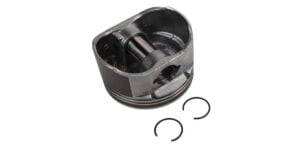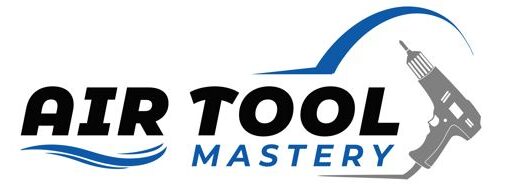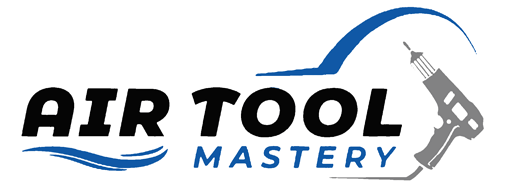Pneumatic pistons play a very important role in many machinery and vehicular operations and are intricate pieces of engineering that turn the energy of compressed air into mechanical motion. There are several key parts of a piston, each playing a crucial role. Each piece connects and works in synergy, resulting in a powerful, efficient, and reliable piece of equipment.
This knowledge is not only essential for those in the mechanical engineering field but also invaluable for anyone seeking to understand the workhorse behind many of today’s machines. So, whether you’re a seasoned professional, a student, or simply a curious reader, strap in for an informative journey into the workings of pneumatic pistons.
What is A Piston?
A piston is a cylindrical component that moves within the cylinder of an engine to transfer energy from expanding gas in the cylinder to the crankshaft. This motion produces mechanical power, which can be harnessed for various purposes.
How a Pneumatic Parts Work
The operation of a piston is based on the principle of differential pressure. Inside a sealed cylinder, the piston experiences atmospheric pressure on one side and increased air pressure on the other. When the air pressure is greater than the atmospheric pressure, the piston moves, creating mechanical motion.
This process begins when compressed air is introduced into the cylinder. The air pushes against the piston, which is forced to move due to the pressure differential. This movement then creates linear or rotary motion, depending on the design of the piston.
One key feature of this pneumatic is the use of seals and rings. These components maintain the pressure differential by preventing air from leaking out of the cylinder, ensuring efficient operation.
Another critical part of the piston’s operation is the return stroke. In many pneumatic pistons, the return stroke is facilitated by a spring mechanism, which returns the piston to its starting position once the air pressure is released. Alternatively, some pistons use a double-acting system where compressed air is used to drive the piston in both directions.
What are the main parts of pneumatic cylinders?

The Cylinder
The cylinder is the primary component of this pneumatic. It’s a tube-like structure typically made of stainless steel or aluminum within which the piston moves. Its inner surface is often polished to reduce friction, providing a smooth pathway for the piston’s movement.
The Piston
It is a cylindrical component that fits within the cylinder. Usually, it’s made of lightweight, robust metals like aluminum or steel. Its primary role is to create motion through the differential pressure principle when air pressure is applied.
Piston Rod
This is a crucial component that connects the piston to the output device or load it is intended to move. This rod is often constructed of steel or aluminum for strength and durability.
Piston Seals
They are important components that prevent air leakage from the piston-cylinder arrangement, ensuring that the pressure differential is maintained. These seals are usually made of elastomeric materials to provide optimal sealing performance.
Piston Rings
Piston rings, similar to piston seals, contribute to maintaining the air pressure within the cylinder. They are usually made of hard-wearing, heat-resistant materials such as cast iron or steel.
Ports
Ports are openings in the cylinder through which the air enters and exits. They are crucial for the initial input of compressed air and the subsequent release of air after the piston has completed its stroke.
Springs
Springs are used in many pneumatics to facilitate the return stroke. They are typically made of steel or other durable materials and are designed to return the piston to its original position once the air pressure is released.
Wear bands/liner
Wear bands or liners are often used in pneumatic pistons to reduce friction and wear. They are often made of materials such as nylon, polyurethane, or Teflon and provide a smooth surface for the piston to slide against.
Types of Pistons

They are classified into different types based on their design, function, and application. Some of the most common types include:
Single-Acting Piston
This type is designed to operate in one direction only, either extending or retracting depending on the application. It uses compressed air to move in one direction and a spring or other mechanism for the return stroke.
Double-Acting Piston
A double-acting piston, on the other hand, is designed to operate in both directions. It uses compressed air for both extending and retracting strokes, making it more efficient than a single-acting piston.
Rotating Piston
This pneumatic can rotate around its axis while also moving in a linear motion. It is often used in applications where both rotational and linear movement is required, such as assembly lines or robotic arms.
Guided Piston
This is designed to have smooth and precise movement, thanks to the use of guide rods or rails. This type of piston is commonly used in high-precision applications where accuracy and repeatability are essential.
Compact Piston
Compact pistons are smaller in size and are designed for use in tight spaces. They are often used in applications where space is limited, such as in small machinery or medical devices.
The Best Pistons For Different Applications
Choosing the right tool for your application is crucial to ensure optimal performance and efficiency. Here are some of the best pistons for different types of applications:
Heavy-Duty Applications
For heavy-duty applications, double-acting pistons are the most suitable option due to their ability to handle high loads and pressures. They also provide more consistent and powerful strokes, making them ideal for tasks such as lifting heavy objects or pressing materials.
High-Speed Applications
When speed is of the essence, rotating pistons are the best choice. Their ability to rotate and move linearly simultaneously allows for faster movements and increased productivity. They are commonly used in automated production lines and other high-speed applications.
High-Precision Applications
In applications where precision and accuracy are critical, guided pistons are the go-to choice. The use of guide rods or rails ensures smooth and precise movement, making them ideal for tasks such as cutting, drilling, or assembly operations.
How Maintain Pistons for Longevity
In as much as these pneumatics are designed for durability and reliability, they also require regular maintenance to ensure optimal performance. Proper maintenance can extend the life of your piston and prevent costly repairs or replacements. Here are some tips to help you maintain your pneumatic:
- Regularly check for leaks or signs of damage, such as cracks or dents.
- Clean your tool regularly to remove any dirt or debris that may affect its performance.
- Ensure that the air supply is clean and dry to prevent contamination and corrosion.
- Check and replace worn or damaged seals as needed.
- Lubricate the piston according to manufacturer’s recommendations. This will help reduce friction and wear on moving parts.
- Regularly inspect and clean the air filters to prevent clogs and maintain proper air flow.
- Avoid overloading the piston or using it beyond its recommended operating pressure. This can cause damage and reduce its lifespan.
Conclusion
Understanding the different parts of a pneumatic piston is important for choosing the right type for your application and ensuring proper maintenance for longevity. By following these tips, you can ensure that your pneumatic continues to function efficiently and effectively, saving you time and money in the long run. It’s also important to regularly monitor and test your piston to catch any potential issues early on before they become major problems.
With proper care and maintenance, your pneumatic can provide reliable performance for years to come. So whether you’re looking to upgrade an existing system or starting a new project, be sure to keep these tips in mind to get the most out of your tool and optimize its performance.

